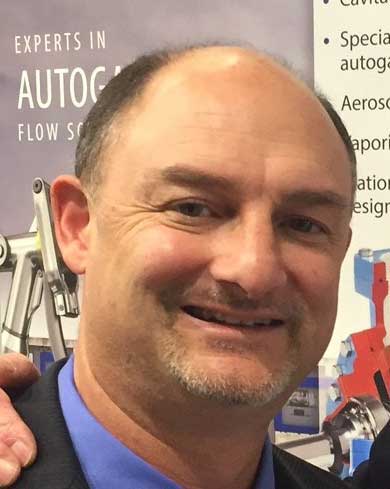Matching the proper compressor with the proper operation

Crouch
No self-respecting chef would attempt to make a new recipe without first having a list of ingredients. Anyone who is trying to piece together a jigsaw puzzle would like to know what the finished product is supposed to look like.
The same logic can be applied for industrial manufacturers: No one should acquire a compressor without first knowing all of the operational parameters of the application.
We will be talking in general here about the transfer of all types of commodities in industrial applications via a reciprocating piston compressor.
Know the landscape
Commodities as wide ranging as industrial gases are commonly transferred for process boosting, loading, unloading and/or vapor recovery. Because all of these substances have their own unique handling characteristics, the operator must perform due diligence in order to ensure that the proper style of compressor is being selected for the proper operation. Operational parameters to consider include:
1. Compression ratio
This is a measurement that determines the amount of work a compressor has to do to transfer a certain amount of product, and is defined as absolute discharge pressure divided by absolute suction pressure. It is represented as a ratio of XX:X. In general, a higher compression ratio means more work for the compressor, so decisions have to be made on the number of stages required and whether air-cooled or liquid-cooled equipment is the best choice. So, if the compression ratio is between 1:1 and 5:1, a single-stage compressor is likely the best choice. At 5:1 to 8:1, a single-stage machine may still work, but a two-stage compressor may need to be considered. A two-stage unit is the best choice from 8:1 to 12:1, and anything higher than 12:1 usually requires a three-stage or higher compressor.
2. Heat of compression
The specific heat ratio of the product being compressed plays a big role in compressor selection. This ratio dictates how a gas behaves with respect to the heat of compression and ultimately determines the number of stages required and whether air- or water-cooled equipment should be used.
3. Duty cycle
This illustrates how often the compressor will be required to operate. For instance, will it be running 24/7 in continuous-duty operation or just intermittently throughout a period of time?
4. Packaging
What is needed, required or desired besides the actual compressor itself is a big decision to consider in all applications. What type of base/skid is needed? What about drivers and controls to meet the needs and safe operation of the equipment? If the unit is lubricated, what type of lubrication system is required and what are any associated filtration needs? These are just some of the many considerations.
5. Location
In other words, where will the compressor be working? Ambient temperatures and elevation can also affect the compressor’s operation.
6. Lubrication system
There are two primary types of reciprocating piston compressors: lubricated and non-lubricated (also known as oil-free). If the product-handling system can handle small traces of oil, a fully lubricated unit should be considered. If the system is incapable of handling small traces of oil, then an oil-free unit is the best choice.
Also, another lubrication-related factor to consider is the compressor’s leakage-control capability. In an age where the reduction or elimination of fugitive emissions to the atmosphere is becoming increasingly important, some compressor designs that require lubrication in the upper cylinder and valve area do not have a gas-sealing section, known as a “distance piece.” This method of design can produce a compressor with significantly higher leakage rates, which can be viewed as an environmental hazard.
Good – and getting better
All things considered, oil-free reciprocating piston compressors have proven to be the best choice when transferring a wide range of liquids and gases. In fact, they significantly outperform their lubricated reciprocating piston cousins, as well as various models of rotary vane, screw and scroll compressors, in a number of important operational areas.
The developers and manufacturers of reciprocating piston compressor technology have introduced a number of enhancements to the standard design of the compressor. These include:
- Improved valve designs. Larger valves offer better product-flow patterns, with polyetheretherketone (PEEK) valve plates now standard. The unit’s unloaders are now made of stainless steel, with stainless steel also an option for the valves. Models with smaller valves have a restricted flow path with PEEK valve plates optional and unloaders made of ductile iron or steel.
- One-piece piston design. The piston is simply threaded to the piston rod and secured with one lock nut with no need for piston screws. Legacy designs feature a slip-fit piston platform that is clamped to the rod with a lock nut and roll pin, while the piston is attached via many small screws.
- Long-life piston rings. The ring’s increased radial thickness provides longer service life.
Improved oil control. For applications that require maximum leakage control, S3R oil-control seals provide more precise oil containment. - Improved bearing design. Features a larger, more robust steel wrist pin needle bearing instead of bronze bushings. The larger wrist pins lower bearing loads, which equates to longer service life. The needle bearings are also lubricated under all rod-load conditions, which also improves service life.
- Improved crankcase design. A large main roller bearing is located on the crankshaft, eliminating the need for bronze bushings at the oil pump bearing carrier. Older compressor models feature smaller main roller bearings and a shaft adapter between the pump and crankshaft, which can be a failure point.
Conclusion
Knowing the needs, parameters and, yes, peculiarities of any type of product-transfer application is a must for anyone who wants to optimize their overall operation. Oil-free reciprocating piston compressors have proven to be the most effective machine in this realm, with the recent upgrades to their design and operation providing additional benefits and peace of mind for the operator.
Ron Crouch is product management director for Blackmer. He can be reached at 616-475-9352 or ron.crouch@psgdover.com.
Featured image: tttuna/E+/Getty Images
















